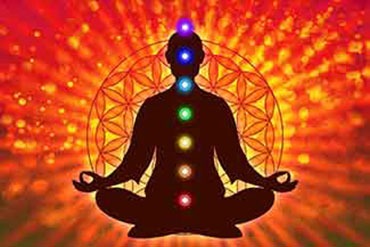 Chakras are the various focal points in the subtle body used in a variety of ancient meditation practices, collectively denominated as Tantra, or the esoteric or inner traditions of Indian religion, Chinese Taoism, Tibetan Buddhism, as well as Japanese Esoteric Buddhism, and in postmodernity, in new age medicine, and originally psychologically adopted to the western mind through the assistance of Carl G. Jung.
Chakras are the various focal points in the subtle body used in a variety of ancient meditation practices, collectively denominated as Tantra, or the esoteric or inner traditions of Indian religion, Chinese Taoism, Tibetan Buddhism, as well as Japanese Esoteric Buddhism, and in postmodernity, in new age medicine, and originally psychologically adopted to the western mind through the assistance of Carl G. Jung.
Everyone is talking about Energy Psychology these days. It seems we are all seeking that thrilling feeling of aliveness that is the province of the energy body.
The chakras are organizational centers that receive, assimilate, store, and transmit life force energy, at each of their respective levels: earth, water, fire, air, sound, light, and thought. Together the seven chakras provide a profound formula for wholeness, one that bridges mind, body, and spirit.
Think of the chakras as describing the architecture of the human soul. Just as we study the architecture of the physical body, with its bones, muscles, and organs, the architecture of the soul reveals the inner psychology of how we respond to life. The ability for each chakra to handle the life force effectively has to do with our programming.
As we grew up through childhood, dealing with the slings and arrows that life sends us, we created defenses. Lodged in our body armor, our belief systems, and our emotions, many of these defenses served us at one time, but now, in our adult life, they get in the way. Most of these programs are largely unconscious.
Since we formed them so long ago, we barely notice them. They become “normal”—at least until something doesn’t work in our life. That could be our body, our relationships, our work, sexuality, or communication, or any other aspect of life. Then we have to look inside to see what’s going on. But to explore that inner territory, we need a good map.
Looking at the chakras through the perspective of your inner psychology gives you a map that allows you to access your unconscious programming and make deeper contact with your core self. Following the liberating current, which runs from the base chakra to the crown, you gain the tools to liberate yourself from fixed patterns, stuck emotions, and hard-wired body armor.
Since much of this material is unconscious, we access it through therapeutic trance journeys, yoga asanas, bioenergetic movements, pranayama, art, and music. Each of these methods provides its own doorway into the inner world. If you really delve deeply into each of your chakras in a systematic fashion, you have the ability to transform your life.
Dr. Randi Fredricks, Ph.D.
Author Bio
Dr. Randi Fredricks is a leading expert in the field of mental health counseling and psychotherapy, with over three decades of experience in both research and practice. She holds a PhD from The Institute of Transpersonal Psychology and has published ground-breaking research on communication, mental health, and complementary and alternative medicine. Dr. Fredricks is a best-selling author of books on the treatment of mental health conditions with complementary and alternative medicine. Her work has been featured in leading academic journals and is recognized worldwide. She currently is actively involved in developing innovative solutions for treating mental health. To learn more about Dr. Fredricks’ work, visit her website: https://drrandifredricks.com

References
Trish O’Sullivan (2010), Chakras. In: D.A. Leeming, K. Madden, S. Marlan (eds.), Encyclopedia of Psychology and Religion, Springer Science + Business Media.
Geoffrey Samuel; Jay Johnston (2013). Religion and the Subtle Body in Asia and the West: Between Mind and Body. Routledge. pp. 1–5. ISBN 978-1-136-76640-4.
Harish Johari (2000). Chakras: Energy Centers of Transformation. Inner Traditions. pp. 21–36. ISBN 978-1-59477-909-1.
Lowndes, Florin (2000). Enlivening the Chakra of the Heart: The Fundamental Spiritual Exercises of Rudolf Steiner (2nd ed.). London: Sophia Books. ISBN 1-85584-053-7.
Chia, Mantak; Chia, Maneewan (1993). Awaken Healing Light of the Tao. Healing Tao Books.
Dahlheimer, Volker (2006). Kundalini Shakti: Explanation of the Seven Chakras (Video clip with words and explanative grafics ed.). 5th Level Publications.
